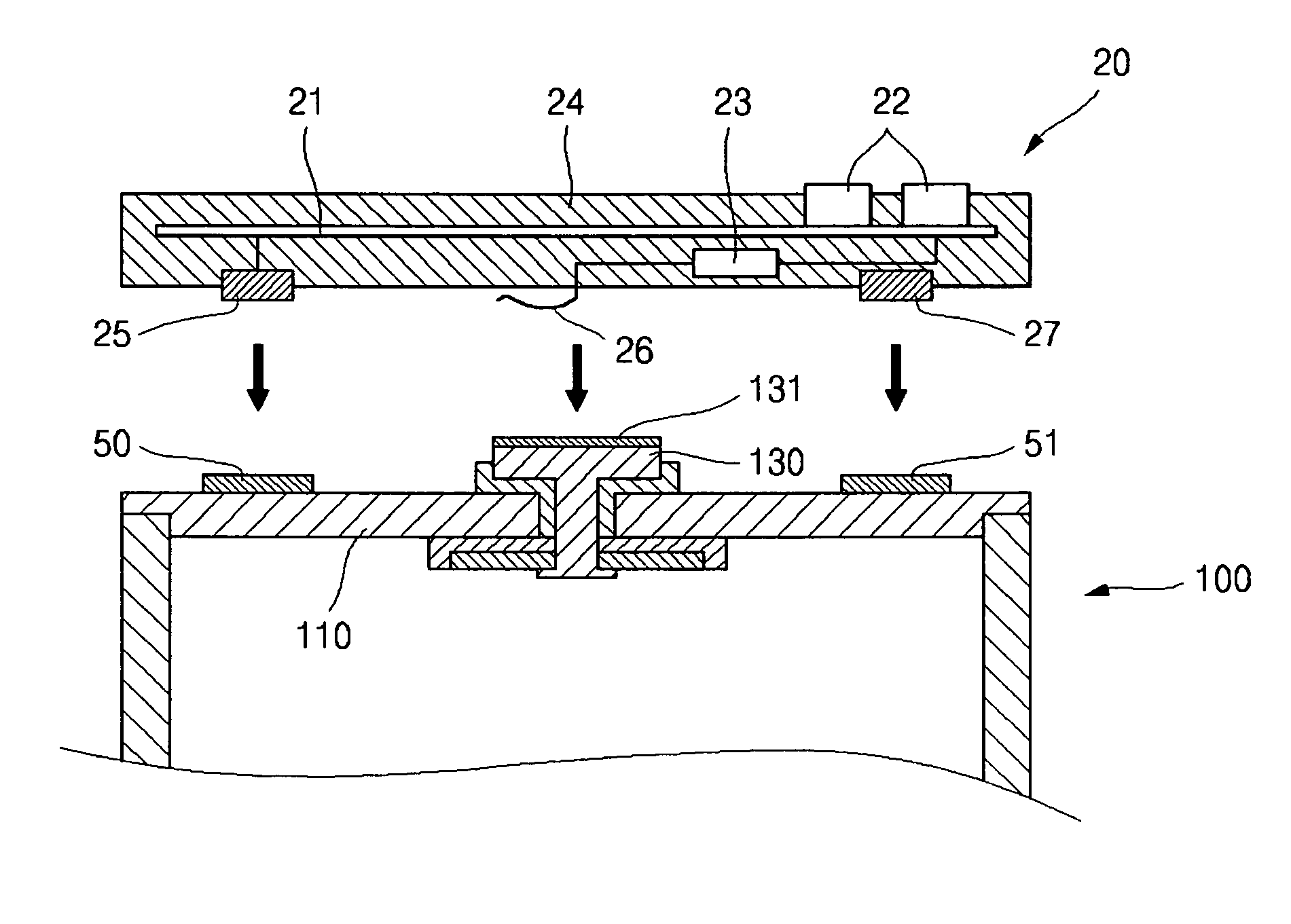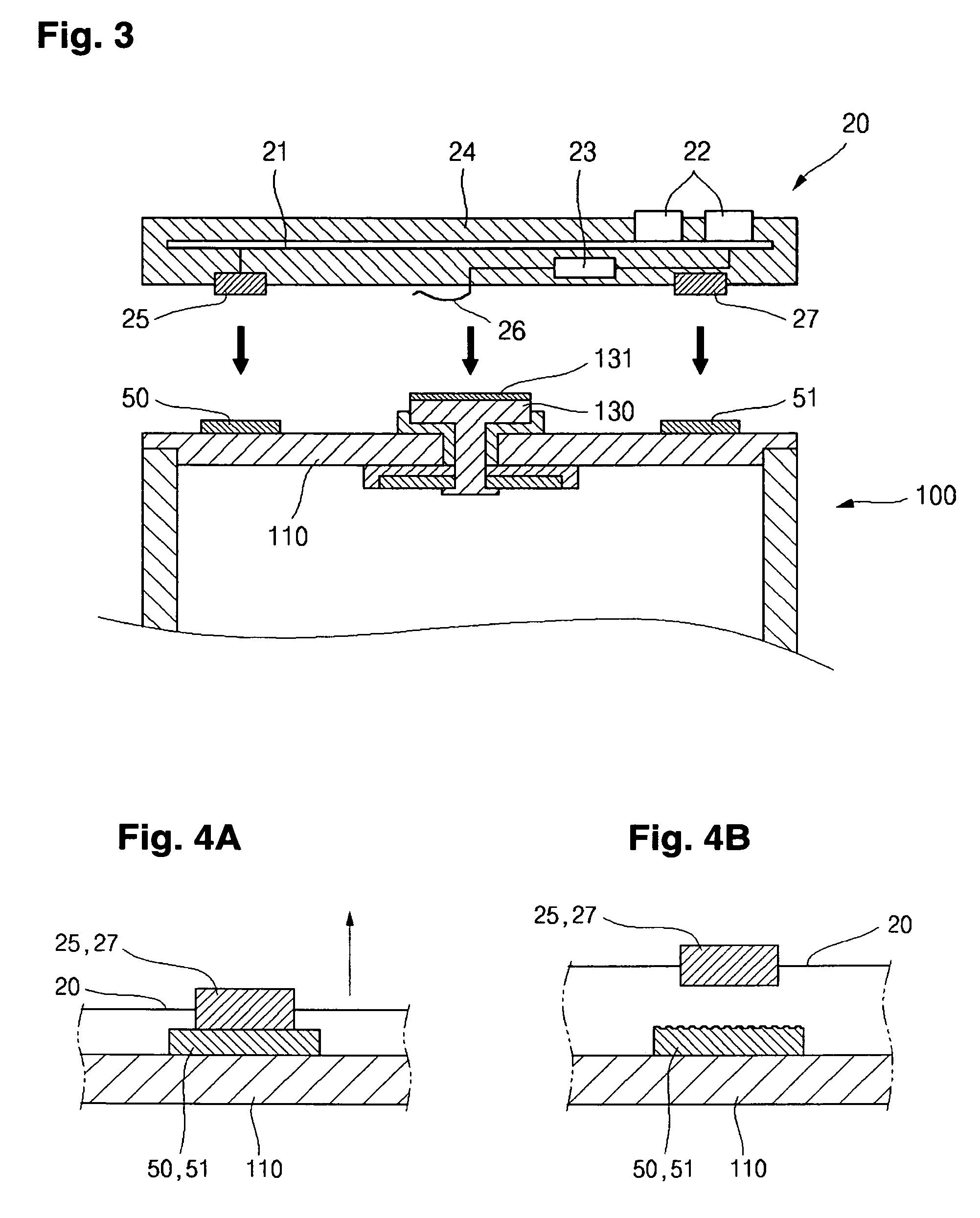Secondary battery
a second battery and battery technology, applied in secondary cell servicing/maintenance, cell components, sustainable manufacturing/processing, etc., can solve the problems of high explosive energy storage, high energy consumption, fire or explosion, etc., and achieve the effect of safe and easy assembly
- Summary
- Abstract
- Description
- Claims
- Application Information
AI Technical Summary
Benefits of technology
Problems solved by technology
Method used
Image
Examples
Embodiment Construction
[0047]FIG. 1 is an exploded perspective view of an example of a lithium ion battery pack before assembling the bare cell with the safety device, and FIG. 2 is a perspective view of an assembled lithium ion battery pack.
[0048]Referring to FIGS. 1 and 2, the protective circuit module 30 is arranged facing a surface of the bare cell on which the electrode terminals 111 and 130 are provided. The space between the bare cell 100 and the protective circuit module 30 is filled with a resin 20 to form a battery as shown in FIG. 2. The resin 20 can be injected into the space until the outer surface of the protective circuit module is covered but the external electrical terminals 31 and 32 are exposed.
[0049]The bare cell 100 has a positive electrode terminal 111 and a negative electrode terminal 130 on its surface facing the protective circuit module 30. The positive electrode terminal 111 can be a cap plate itself made of aluminum or an aluminum alloy or a metallic plate containing nickel for...
PUM
| Property | Measurement | Unit |
|---|---|---|
| bond strength | aaaaa | aaaaa |
| electrically conductive | aaaaa | aaaaa |
| electrical conductivity | aaaaa | aaaaa |
Abstract
Description
Claims
Application Information
 Login to View More
Login to View More - R&D
- Intellectual Property
- Life Sciences
- Materials
- Tech Scout
- Unparalleled Data Quality
- Higher Quality Content
- 60% Fewer Hallucinations
Browse by: Latest US Patents, China's latest patents, Technical Efficacy Thesaurus, Application Domain, Technology Topic, Popular Technical Reports.
© 2025 PatSnap. All rights reserved.Legal|Privacy policy|Modern Slavery Act Transparency Statement|Sitemap|About US| Contact US: help@patsnap.com



